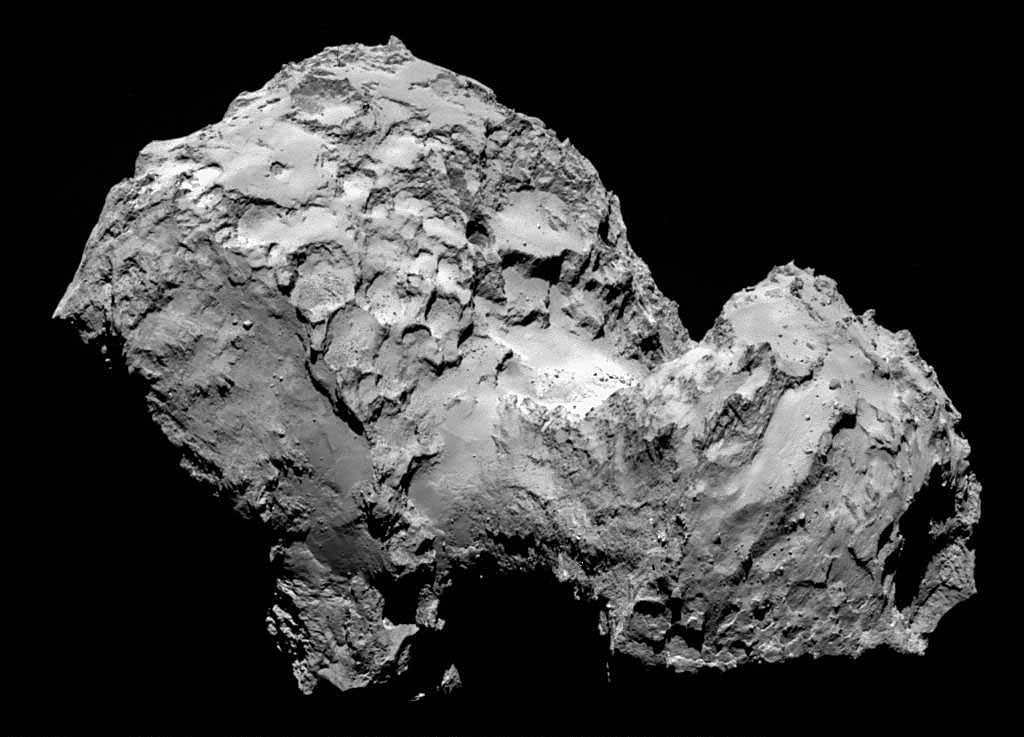In August 2014, the ESA’s Rosetta spacecraft arrived at its destination, Comet 67P/Churyumov-Gerasimenko, after a 10 year journey. Rosetta carried a small companion, the Philae Lander. On November 12th, Philae was sent to the surface of Comet 67P. Unfortunately, things didn’t go exactly as planned, and the lander’s mission lasted only 63 hours.
During that time, it gathered what data it could. But mission scientists weren’t certain of its precise location, meaning its data was difficult to interpret accurately. Only when scientists knew precisely where Philae was located on the comet, could they make best use of all of its data.
Rosetta was the third mission in the ESA’s Horizon 2000 program. On its way to Comet 67P, it performed flybys of Earth and Mars, and of two other asteroids. But Comet 67P was its target, and it was the first spacecraft to ever orbit a comet. And the Philae lander was the first spacecraft to land on a comet.
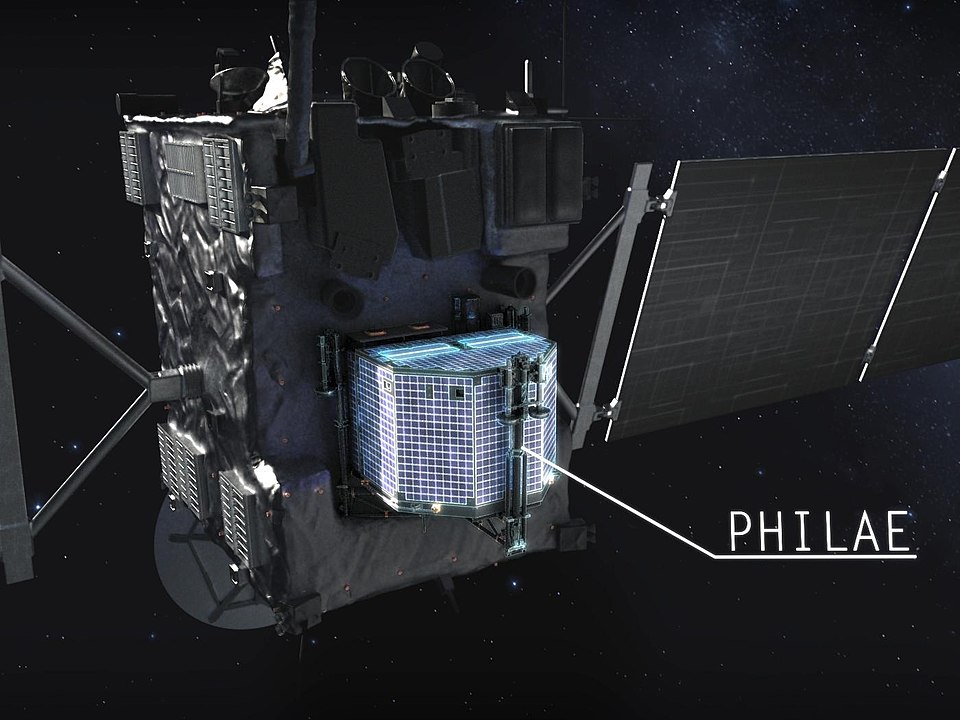
Landing on 67P was a tricky maneuver. The escape velocity from the comet is very low, and there was a significant risk that Philae would just bounce off and be lost to space forever. To prevent that, it was outfitted with two landing harpoons, which would anchor it to the comet’s surface.
Unfortunately, those devices failed, and Philae did bounce around. It stayed on the surface of the comet, but bounced into a shaded area under a cliff. Sadly, it was not able to gather energy with its solar panels, and once it’s batteries ran out, that was pretty much it. It functioned for only 63 hours, though there was some sporadic contact with it in the following summer. In July 2016, its mission was officially ended when the equipment Rosetta used to communicate with Philae was shut down to conserve power.
Also in 2016, Philae’s final resting place was accurately determined. With that key piece of information in hand, scientists got to work.
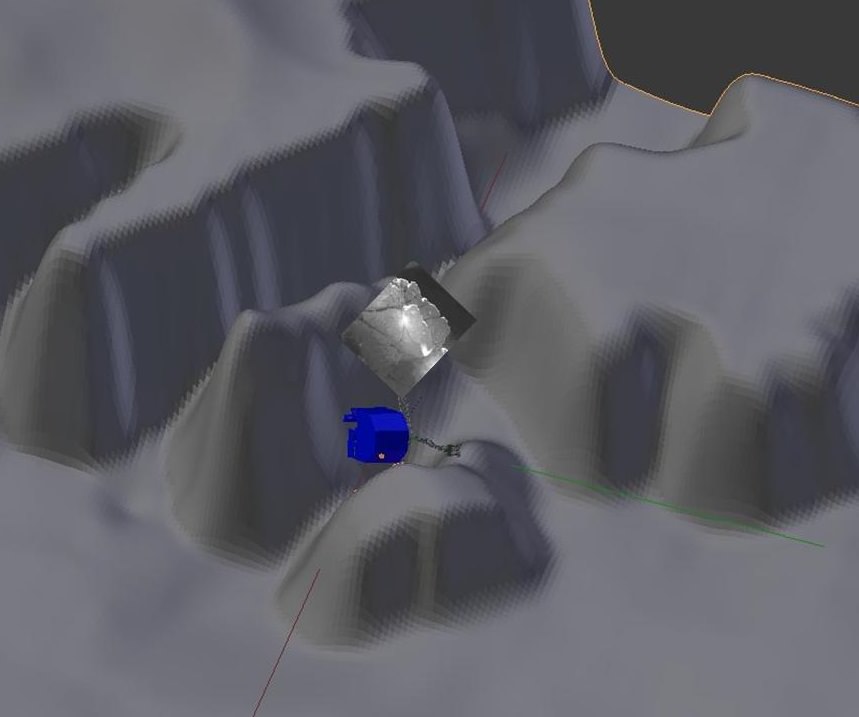
Now a recent study based on data from Philae is shedding more light on Comet 67P. The study is titled “The interior of Comet 67P/C–G; revisiting CONSERT results with the exact position of the Philae lander.” The study is published in the Monthly Notices of the Royal Astronomical Society, and the lead author is Professor Wlodek Kofman from the University of Grenoble, in France.
Kofman is also the emeritus principal investigator of CONSERT. CONSERT stands for COmet Nucleus Sounding Experiment by Radiowave Transmission. CONSERT probed the interior of Comet 67P using tomography. It propagated electromagnetic waves through the comet between Philae and Rosetta, and by measuring those waves it learned about the structure and composition of the comet’s nucleus.
When Philae first landed on 67P, scientists weren’t exactly sure of its location. That meant that all of that CONSERT data was unclear, and conclusions about it contained a certain amount of estimation. It wasn’t until two years later that the lander’s location was established more precisely, and that meant that the data became much clearer.
“We managed to define the region where the lander was with a margin of about 150 m. The real landing site was in this region,” explained Professor Kofman in a press release.
CONSERT results reveal differences between the comet’s nucleus and its surface. Each region has different permittivity values. In basic terms, permittivity is the ability of a material to store electrical potential energy under the influence of an electric field.
As the signals between the lander and the orbiter travel through different material, their speed changes. With different permittivity values, the rays propagate at different velocities. The different speeds provide insights into the density of the materials.
The authors explain it best in the introduction to their paper: “We analysed the propagation paths of rays inside the comet, studying their length, depth, and propagation time through the nucleus. We discovered that rays propagating in the shallow subsurface have smaller velocities than those propagating in the deeper interior.”
The different signal velocities “… can be explained by various physical phenomena such as different porosities, the possible compaction of surface materials, or even perhaps different proportions of the same materials. This strongly suggests that the less dense interior has kept its pristine nature,” the authors write in their paper.
CONSERT got its best data during two periods of time on November 12th, 2014. They’re referred to as the morning signal and the evening signal. With those chunks of data, Philae and Rosetta were only able to measure the interior of one lobe of the comet.
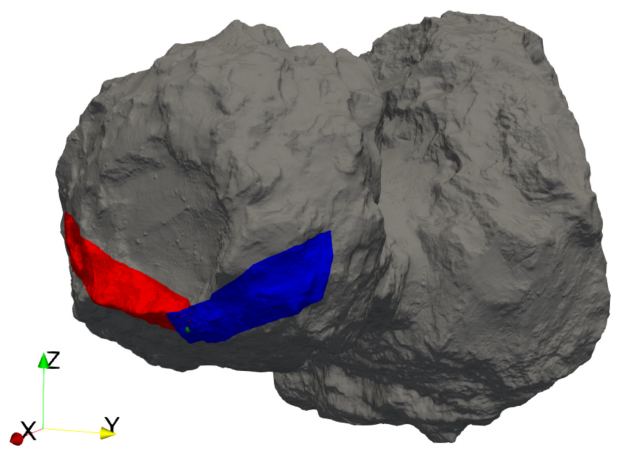
With the precise location of Philae known, researchers were able to construct a 3d model of the comet. Those precise models “allowed us to revisit the measurements and improve our analysis of the interior,” says Kofman.
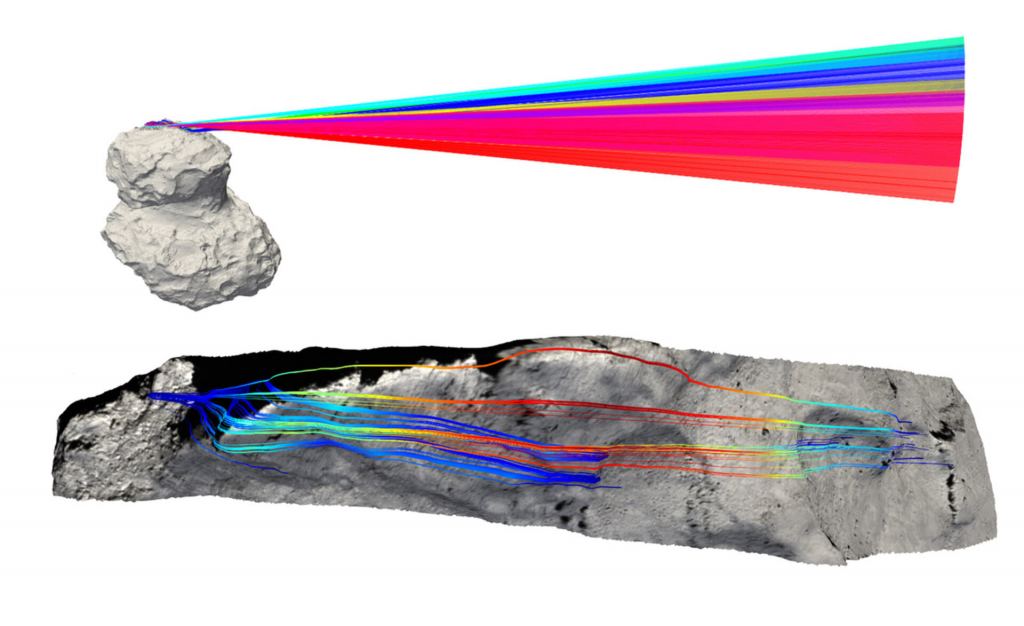
In this case, it points to a less dense, permeable nucleus, covered with a hardened facade. This could mean that while the comet’s interior has maintained its pristine and permeable ancient condition, the surface has been modified over time by natural processes. Over time, exposure to the Sun has changed the surface of Comet 67P.
In the paper, lead author Kofman said “This strongly suggests that the less dense interior has kept its pristine nature.”
Over billions of years in the life of Comet 67P, multiple processes were at work shaping the surface. These processes reached their peak each time the Comet passed through perihelion. Overall, these processes would have made the surface more dense, while the nucleus remained unchanged.
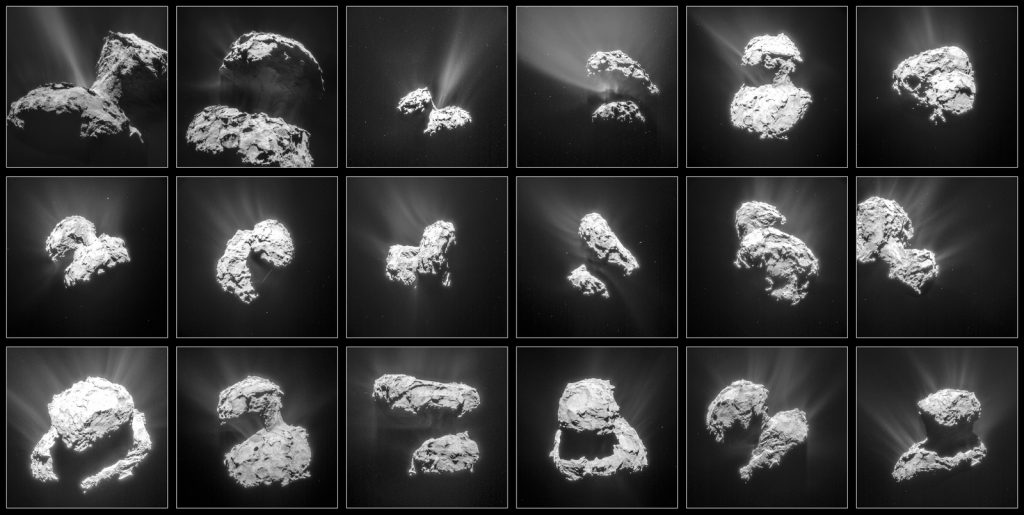
“This variation in porosity could be caused by a variety of different mechanisms,” the researchers write. “For example, it could indicate the possible compaction of the surface materials due to enhanced sublimation
or recondensation of ices close to the surface, or it could mean the
presence of different proportions of the same materials, which could
imply composition changes to a higher dust-to-ice ratio close to the
surface.”
The team also says that heat from the Sun has ejected material from the comet, which than fell back to the surface, leading to greater compaction. “Additional mechanisms such as cliff collapses or the formation of dust deposits may also play a significant role in getting more compact material to the surface,” they write.
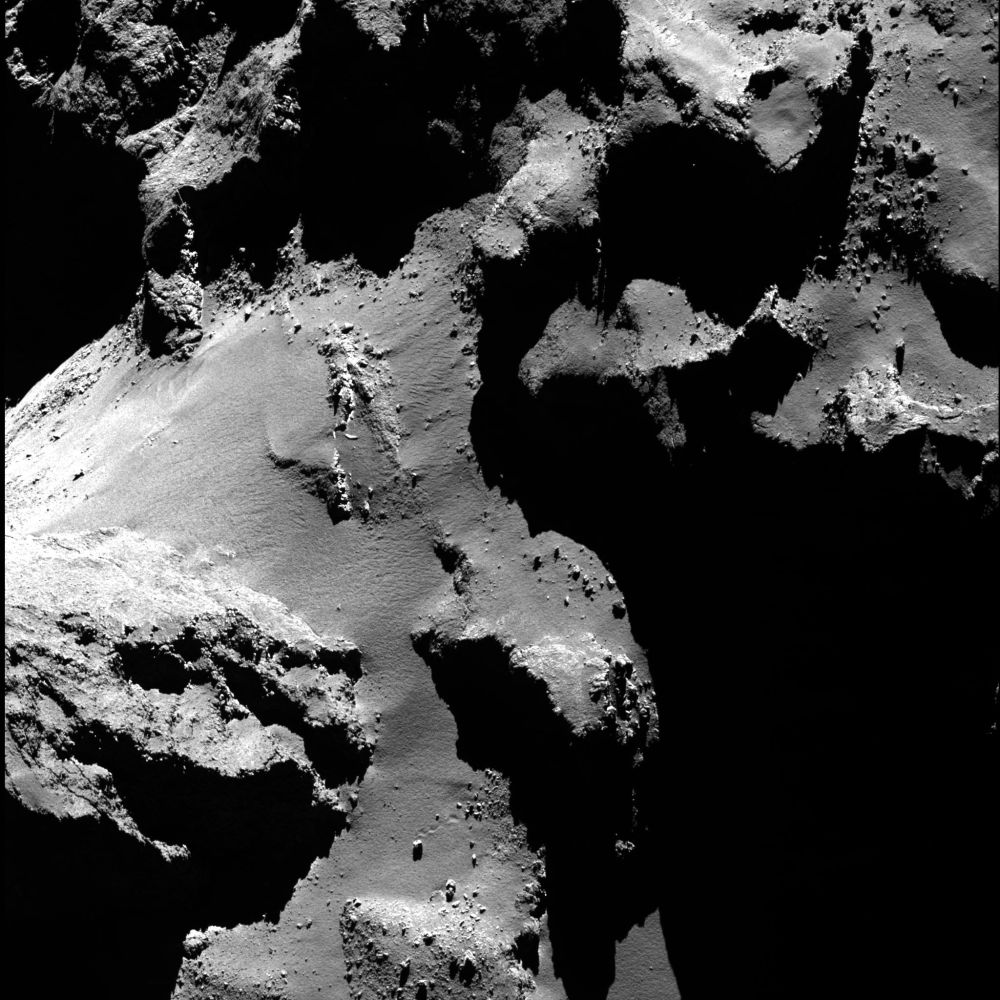
Comets like 67P are some of the most primitive objects in the Solar System. Their unchanged nuclei are like time capsules, containing evidence from the first days of our Solar System. Getting an actual sample from the nucleus of a comet is in the future, hopefully. But until then, studies like this one are our best window into the cores of these ancient bodies.
There are still many questions. For instance, how smooth is the change in permittivity with depth? Is it abrupt? Or more gradual? “Our measurements
cannot uniquely explain the change in permittivity with depth, and they also cannot rule out the possibility of a smooth change in permittivity with depth,” the authors write in their conclusion.
But it does confirm other things. NASA’s OSIRIS-REx mission to asteroid Bennu observed material leaving the surface of the asteroid and then falling back to the surface again. The same process appears to be taking place on Comet 67P.

“These new results confirm that the subsurface is modified by its
interaction with space, leading to the ejection of material that partially
falls back on the nucleus (as extensively observed by OSIRIS). Our
results also strongly suggest that the interior of the nucleus is more
porous than its subsurface,” the authors conclude.
More:
- Press Release: Rainbow comet with a heart of sponge
- Published Research: The interior of Comet 67P/C–G; revisiting CONSERT results with the exact position of the Philae lander
- Previous CONSERT Research (2015): Properties of the 67P/Churyumov-Gerasimenko interior revealed by CONSERT radar
- Universe Today: Rosetta Saw Collapsing Cliffs and Other Changes on 67P During its Mission

